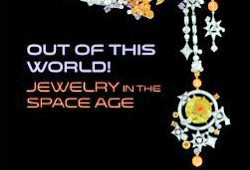
The human race has always had a fascination with the stars. The Sun was considered by many early cultures to be a god, for instance, and the constellations likewise held religious significance. The dream of traveling to the Moon and beyond was reflected in the nineteenth century novels of Jules Verne and H.G. Wells, while that aspiration continued during the twentieth century through the works of such sci-fi luminaries as Isaac Asimov, Arthur C. Clark, and Robert Heinlein.
With the advent of radio, film, and television, sound and images were added to these narratives as the science fiction genre evolved and grew in popularity. Starting in the 1950s, meanwhile, the fantasy of space travel became reality, resulting in Neil Armstrong becoming the first person to walk on the Moon in 1969. Humanity’s fascination with the stars is not limited to factual space explorations and science fiction space operas, however, but has spilled over into the culture of the times in other ways as well.
A 2013 exhibit at the Forbes Gallery in New York City that was transported to the Carnegie Museum of Natural History in Pittsburgh, Pennsylvania, in June 2015 showcased just one of the many ways that outer space has impacted culture. Entitled Out of This World! Jewelry in the Space Age, the exhibit contained an impressive and priceless collection of broaches, pins, pendants, and earrings that paid homage to the significant role that the stars have played in the evolution of the human race, a blending of both science fact and science fiction into an art of wonder and beauty in its own right.
Items within Out of This World! included relics close to 200 years old that were inspired by the appearance of Halley’s Comet in 1759. A star neckless and Halley’s Comet pin from 1835 and brooches from both the Georgian (1714-1837) and Victorian (1837-1901) Eras, for instance, were joined by more contemporary brooches and bracelets that carry the theme of “shooting stars” into modern times.
Jules Verne, meanwhile, used Tampa, Florida, as the launch site for his From Earth to the Moon spacecraft, a fact reflected in the artwork of the Tampa Necklace by Van Cleef & Arpels that features a rocket trailed by diamonds and interchangeable pendants.
The successful launch of the first satellite, Sputnik, by the Soviet Union in 1957 was likewise a source of inspiration for not only jewelry but other “Space Age” designs incorporated into everything from toys and furniture to coffee mugs and Christmas lights. As the space race heated up in the 1960s, so did the imagination of jewelry makers around the world, who not only crafted gems as art but as a commemoration of humanity’s achievements as well.
The Paris newspaper Le Figaro, for instance, commissioned Cartier to construct three solid gold Lunar Module replicas that were presented to Neil Armstrong, Buzz Aldrin, and Michael Collins during their visit to France after the successful Moon landing of Apollo 11 in 1969. A small piece of microfilm was embedded in each of the Lunar Module’s core that contains the names of Le Figaro subscribers whose donations made the gifts possible.
Out of This World! also contained jewelry crafted with the same material used in the construction of spacecrafts by NASA – including titanium, polymer, nitinol, and dichroic glass – as well as material from meteorites that fell to Earth and items taken into orbit aboard the Space Shuttle.
“Astronauts are allowed to take up to twenty personal items on space missions in their Personal Reference Kit,” the exhibit explained. “Jewelry is often among the items of choice for astronauts because of its small size and personal nature. A series of watches were also made for astronauts to wear in space.”
The popularity of Star Trek in the 1960s and Star Wars in the 1970s likewise led to an abundance of science fiction inspired jewelry and merchandise. Contemporary designers like Sergey Jivetin in New York, Mark Rooker of Virginia, and Paul Bierker of Paul Michael Design in Pittsburgh have all incorporated such sci-fi icons as the droid R2D2 from Star Wars, the TARDIS from Doctor Who, the spacecraft Serenity of Firefly, the Galileo Shuttle from Star Trek, and even the image of Han Solo frozen in carbonite into rings, earrings, and pendants.
Needless to say, the Out of This World! Jewelry in the Space Age contained literally hundreds of items within its exhibit, a collection that spanned both decades and centuries as it explored not only the art of such jewelry but a history of humanity’s fascination with the stars and beyond as well.
“We have come a long way in our quest to go into space,” Out of This World! curator Elyse Zorn Karlin reflected in a companion catalogue to the exhibit. “Americans have walked on the Moon and made many visits to the International Space Station. Satellites have allowed us to communicate worldwide, predict the weather, and explore distant worlds. Missions to Mars, Mercury and Pluto and the discoveries they are revealing are in the news right now. With the end of the Space Shuttle program, the private sector has jumped in to fill the gap. There are even a number of companies preparing to offer tourists trips to the Moon!”
The human race has always had a fascination, a fascination immortalized in the cultural artifacts of the past and the present – a trend that will no doubt continue well into the future.
Anthony Letizia

